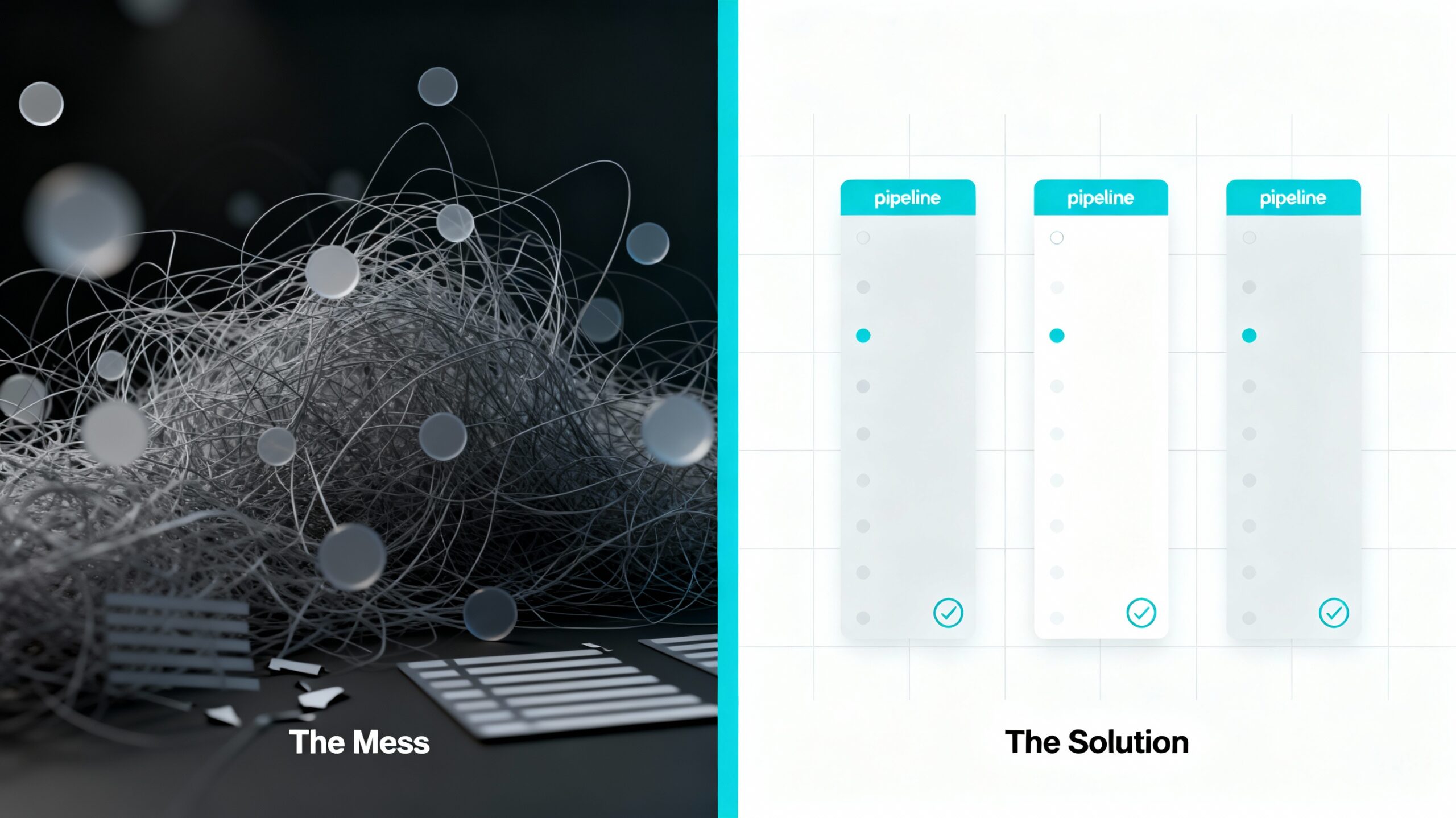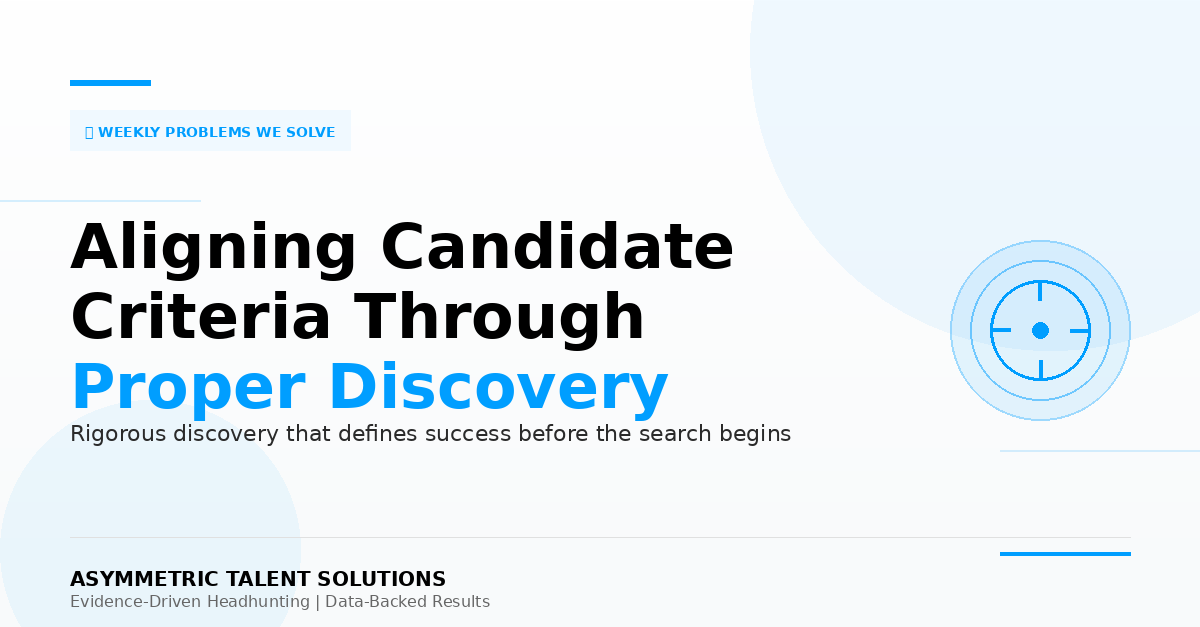How a Competitive Talent Pool Transforms Hiring in IT
- Blog

January 15th, 2025
Transform Hiring with Competition – How a Competitive Talent Pool Transforms Hiring in IT
The IT industry is experiencing an undeniable talent shortage. Organizations often struggle to see a competitive talent pool for their open roles, which leads to longer hiring timelines, increased stress, and suboptimal outcomes. However, embracing a modern and effective sourcing and candidate engagement strategy can create a competitive talent pool that transforms the hiring process and drives positive outcomes.
The question everyone should be asking themselves is “Do we possess the ability to create competition with our ideal prospect talent pool?”
…Let’s explore how competition within talent pools validates top candidates, enhances company culture, and fuels growth, while also addressing the practical benefits of building and engaging with comprehensive, high-quality candidate pools.
The Power of a Competitive Talent Pool
A competitive talent pool isn’t just about numbers—it’s about creating an environment where candidates strive to prove their value. This dynamic drives better hiring outcomes and offers several key benefits:
Validation Through Competition: In a competitive hiring environment, candidates must demonstrate their expertise, problem-solving skills, and ability to excel under pressure. Just like in sports or business, competition helps identify those who can truly perform and contribute at a high level.
Culture of Excellence: Bringing in candidates who have competed to earn their roles fosters a culture of innovation, ambition, and growth within an organization.
Inspiration for Innovation: A competitive environment often attracts high-performing individuals who push boundaries and inspire others, driving innovation and advancement.
____________________________________________________________________________________
Creating a Competitive Talent Pool
The challenges organizations face isn’t just about finding talent—they’re about creating and sustaining a competitive pool that reflects the modern hiring landscape. Here’s how to achieve it:
Identify Comprehensive Talent Pools
Many organizations make the mistake of limiting their candidate search to a narrow or arbitrary number. A robust talent pool should reflect the true breadth and depth of the market, including:
- Active job seekers
- Passive candidates who are not actively searching but open to the right opportunity
- Talent from diverse geographies, industries, and backgrounds
By confirming the scope, organizations ensure they are not missing out on hidden talent.
Engage Candidates Effectively at Scale
A competitive talent pool is only valuable if candidates are engaged in a powerful, genuine, and personalized manner. Modern sourcing strategies should enable organizations to:
- Personalize communication at scale, leveraging tools like LinkedIn InMails, email campaigns, and ATS platforms with tailored messaging.
- Maintain authenticity, ensuring every candidate interaction feels meaningful and respectful.
- Achieve above-average reach and response rates by refining outreach efforts based on data, such as open and response rates, candidate feedback, and sourcing performance metrics.
Effective Communication
Providing a pleasurable interview and hiring process is critical to creating a positive candidate experience. This includes:
- Transparent Communication: Keeping candidates informed about timelines, expectations, and next steps at every stage of the process.
- Real-Time Engagement: Leveraging modern channels, such as texting or live chat, to provide quick updates and reduce ambiguity.
- Clear Expectations: Outlining the hiring process from the start so candidates know what to expect and can prepare accordingly.
When communication is consistent and transparent, it enhances the candidate experience, making them more likely to accept an offer and refer others to the organization.
Commitment from Stakeholders
A successful hiring strategy requires commitment from all stakeholders involved in the process. This includes:
- Hiring managers, who must be actively engaged in defining the role, reviewing candidates, and participating in interviews.
- Recruiters, who must dedicate the time and resources to thoroughly source and screen candidates.
- Organizational leadership, who should support hiring initiatives by prioritizing budget, tools, and cultural alignment.
Without full stakeholder commitment, gaps and delays emerge, jeopardizing the effectiveness of the process.
Accountability to the Process
Accountability is a cornerstone of a competitive talent pool, yet it’s surprisingly rare. All too often, individuals fail to follow through on their commitments, such as:
- Hiring managers delaying feedback on candidates
- Recruiters failing to keep candidates informed
- Organizations backtracking on timelines or job offers
When everyone involved in the hiring process consistently does what they say they will, it builds trust and reinforces the professionalism of the organization. Holding people accountable to their commitments fosters efficiency, reduces frustration, and improves outcomes for both candidates and hiring teams.
Optimize Screening Processes
Effective screening is critical to maintaining a competitive talent pool. A well-designed process ensures that:
- Candidates are assessed fairly and thoroughly on skills, experience, and cultural fit.
- Real-world scenarios, technical challenges, and case studies are integrated into the process to validate capabilities.
Automation is used to handle repetitive tasks, freeing up time for recruiters to focus on meaningful candidate interactions.
____________________________________________________________________________________
Outcomes of a Competitive Talent Pool
When organizations create a competitive talent pool and leverage it effectively, the results are transformative. Here’s what they can expect:
Reduced Time to Hire
With a robust talent pool already in place, the time spent searching for candidates decreases significantly. A streamlined hiring process, backed by data and validated expertise, ensures faster decision-making.
Controlled, Stress-Free Hiring
Competition ensures that the top candidates emerge naturally, reducing the pressure on hiring managers to overanalyze or second-guess decisions. A data-backed process fosters confidence in hiring choices.
Increased Hiring Efficiency
Modern sourcing and engagement tools allow organizations to manage high volumes of candidates without sacrificing personalization or quality. This leads to less time consumed when hiring and enables teams to focus on strategic priorities.
Higher Retention and Tenure Rates
Candidates who compete for and earn their positions tend to have stronger alignment with the role and organization, resulting in greater job satisfaction, higher retention, and longer tenure.
Success in Multi-Hire Engagements
For organizations looking to scale quickly, a competitive talent pool provides the ability to meet multi-hire goals without compromising on quality. This is especially critical in IT, where demand for talent often exceeds supply.
A Modern Talent Acquisition Strategy: The Foundation of Success
To build and leverage a competitive talent pool, organizations need a modern talent acquisition strategy that emphasizes:
Proactive Sourcing: Engage passive candidates and expand beyond traditional job boards to tap into a broader talent pool.
Employer Branding: Position your organization as a destination for top talent by showcasing your culture, values, and growth opportunities.
Data-Driven Decision Making: Use analytics to track sourcing performance, measure engagement, and continuously refine the hiring process.
Personalized Candidate Experiences: Treat candidates as individuals, not numbers, to build trust and stand out in a competitive market.
________________________________________
Closing Thoughts
The talent shortage in IT is a real and pressing challenge, but it doesn’t have to define your hiring outcomes. By creating and engaging with a competitive talent pool, organizations can reduce time to hire, streamline the hiring process, and ensure long-term success.
Competition fuels progress. When organizations foster a competitive environment for their talent pool, they validate skills, attract top performers, and drive cultural and organizational growth. A strategic approach to sourcing and engagement doesn’t just address the talent shortage—it positions companies to thrive in a dynamic and ever-evolving industry.
Michael Russo, President
Asymmetric Talent Solutions
mrusso@asymmetrictalent.com


